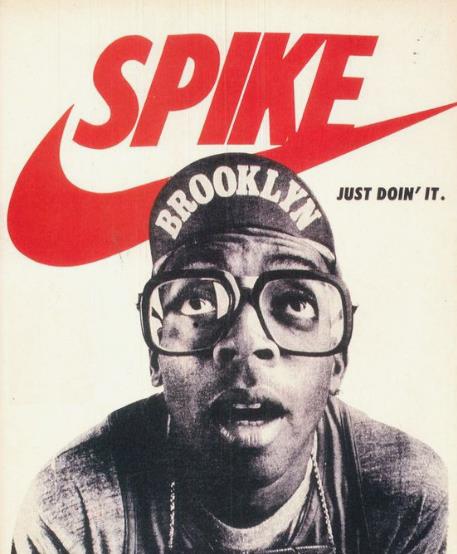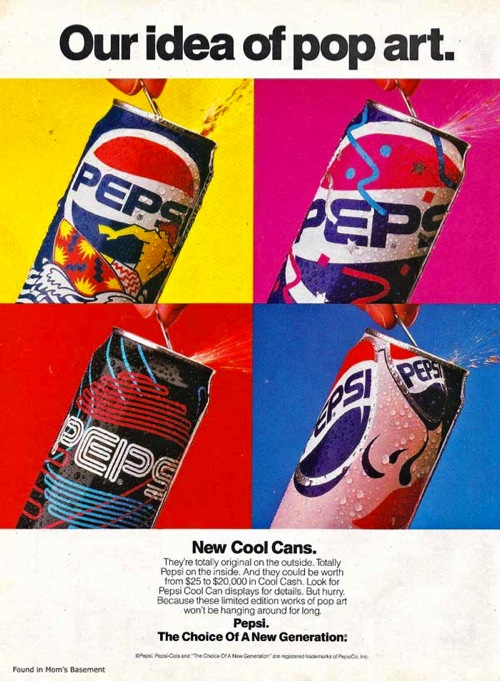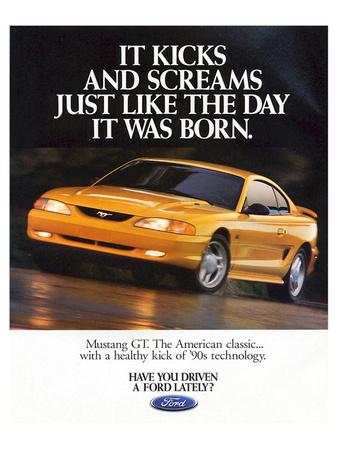Step back in time to the vibrant and dynamic era of the 1990s, where advertising posters ruled the streets and captured the essence of the decade. In this article, we will dive deep into the world of 90s advertising posters and explore their impact on popular culture. Get ready for a nostalgic journey as we examine the unique aesthetics, catchy slogans, and memorable imagery that defined the advertising landscape of the 90s.
The 90s was a decade like no other, characterized by its boldness, individuality, and unapologetic attitude. From iconic fashion trends to groundbreaking music, the 90s left an indelible mark on our collective consciousness. And at the forefront of this cultural revolution were the advertising posters that adorned billboards, bus stops, and city walls. These posters were more than just advertisements; they were visual representations of an entire decade. So, grab your scrunchies, put on your favorite flannel shirt, and join us on a journey through the captivating world of 90s. advertising posters.

Selling the Decade: An Examination of 90s Advertising Posters
Step back in time and explore the captivating world of 90s advertising posters. From the iconic imagery to the catchy slogans, these posters played a vital role in shaping the advertising landscape of the decade. Join us as we delve into the creative genius behind these posters, uncovering the trends, techniques, and cultural influences that made them so effective. Discover the power of visual storytelling and the enduring impact of these nostalgic artworks.
Selling the Decade: An Examination of 90s Advertising Posters
The 90s was a decade of immense cultural and technological change. It was a time when advertising took on a new level of creativity and innovation, particularly in the form of posters. These advertising posters became iconic representations of the era, capturing the spirit of the times and leaving a lasting impact on popular culture. In this article, we will delve into the world of 90s advertising posters and explore their significance and influence.
The Rise of 90s Advertising
The 90s saw a shift in advertising strategies and techniques. As technology advanced, advertisers had new tools at their disposal to create visually striking and attention-grabbing posters. The rise of desktop publishing and graphic design software allowed for greater experimentation and creativity. This led to an explosion of bold and vibrant designs that pushed the boundaries of traditional advertising.
One of the defining characteristics of 90s advertising posters was their ability to capture the essence of the decade. They reflected the cultural trends and attitudes of the time, from the rise of grunge and hip-hop to the emergence of the Internet and globalization. These posters became a visual representation of popular culture, capturing the spirit of the era and resonating with audiences.
The Impact of Iconic Advertising Campaigns
Numerous iconic advertising campaigns emerged during the 90s, each with its own unique style and message. These campaigns not only promoted products but also became cultural touchstones that defined the decade. One such example is the “Got Milk?” campaign, which featured celebrities sporting milk mustaches and aimed to increase milk consumption. The simple yet impactful design of these posters, combined with the memorable slogan, made them instantly recognizable and highly effective.
Another notable campaign of the 90s was the “Just Do It” campaign by Nike. This campaign revolutionized the way sports brands approached advertising. The posters featured athletes in action, accompanied by the powerful and inspiring slogan “Just Do It.” These posters captured the essence of athleticism and determination, resonating with consumers and solidifying Nike’s position as a leading sports brand.

The Artistic Evolution of 90s Advertising Posters
The 90s saw a significant shift in the artistic approach to advertising posters. Advertisers began to embrace more experimental and unconventional designs, breaking away from the traditional norms of advertising. This led to the emergence of eye-catching and thought-provoking posters that captured attention and sparked conversations.
One notable trend was the use of bold typography and vibrant colors. Advertisers realized the power of typography in conveying messages and emotions. They experimented with various fonts, sizes, and arrangements to create visually striking posters that stood out from the crowd. Additionally, the use of vibrant colors became a hallmark of 90s advertising posters, captivating viewers and evoking strong emotions.
The Influence of Pop Culture
Pop culture played a significant role in shaping 90s advertising posters. Advertisers recognized the influence of movies, music, and television on popular culture and leveraged it to create highly engaging and relatable posters. They incorporated references to iconic movies, popular songs, and beloved TV shows, instantly striking a chord with viewers.
For example, the film “Pulp Fiction” had a massive impact on 90s culture, and advertisers capitalized on its popularity. Posters featuring iconic quotes and imagery from the movie became highly sought after, appealing to both fans of the film and those who wanted to stay on-trend. This integration of pop culture elements into advertising posters helped to establish a strong connection with the target audience and enhance brand recognition.
In conclusion, 90s advertising posters were more than just promotional tools. They were artistic expressions that captured the essence of the decade and left a lasting impact on popular culture. Through bold designs, innovative techniques, and a deep understanding of the cultural landscape, advertisers created posters that resonated with audiences and became iconic representations of the era. The artistic evolution and incorporation of pop culture elements made 90s advertising posters highly engaging and memorable, ensuring their place in the annals of advertising history.
Key Takeaways: Selling the Decade – An Examination of 90s Advertising Posters
- 1. 90s advertising posters were colorful and eye-catching, often using bold typography and vibrant imagery to grab attention.
- 2. Many 90s advertising posters featured popular trends of the time, such as grunge fashion, technology, and pop culture references.
- 3. Brands in the 90s used advertising posters to create a sense of nostalgia and appeal to consumers’ emotions and memories.
- 4. The 90s advertising posters reflected the cultural and societal shifts of the decade, showcasing diversity and breaking traditional norms.
- 5. The 90s advertising posters played a significant role in shaping the visual aesthetics of the era and continue to inspire contemporary design trends.
Frequently Asked Questions
1. How were advertising posters in the 90s different from previous decades?
Advertising posters in the 90s were characterized by bold and vibrant designs that reflected the spirit of the decade. Compared to previous decades, 90s posters often featured bright colors, exaggerated typography, and playful imagery. The use of computer graphics and digital effects became more prevalent, giving the posters a modern and futuristic look. Additionally, the 90s saw a shift towards more targeted advertising, with posters specifically tailored to appeal to different demographic groups.
Overall, the advertising posters of the 90s were a departure from the more traditional and conservative designs of previous decades. They embraced the spirit of the times, capturing the energy and excitement of the era.
2. What were some popular themes and trends in 90s advertising posters?
One popular theme in 90s advertising posters was nostalgia. Many brands capitalized on the trend by incorporating elements from the past, such as retro fonts and imagery, to create a sense of familiarity and nostalgia among consumers. Another prevalent trend was the use of humor and wit in advertising posters. Brands sought to entertain and engage their audience through clever and humorous visuals and slogans.
Furthermore, the 90s witnessed a rise in celebrity endorsements, with many advertising posters featuring famous actors, musicians, and athletes. This strategy aimed to leverage the popularity and influence of these celebrities to promote products and services. Lastly, the advent of technology and the internet also influenced 90s advertising posters, with some incorporating futuristic elements and digital aesthetics.

3. How did advertising posters in the 90s reflect the cultural shifts of the decade?
Advertising posters in the 90s reflected the cultural shifts of the decade by embracing diversity and inclusivity. Many posters showcased people from different backgrounds, races, and genders, celebrating the multicultural society of the time. This was a response to the growing awareness of social issues and the demand for representation in media.
Additionally, the 90s saw a rise in environmental consciousness, and this was reflected in some advertising posters. Brands highlighted their commitment to sustainability and conservation through the use of eco-friendly imagery and messaging. The posters also reflected the changing attitudes towards gender roles and sexuality, with some challenging traditional norms and embracing more progressive ideas.
4. How did advertising strategies change in the 90s with the rise of the internet?
The rise of the internet in the 90s brought about significant changes in advertising strategies. With the advent of online advertising, brands had to adapt to new platforms and mediums. Advertising posters began to incorporate website URLs and email addresses to direct consumers to online content. This marked a shift towards interactive advertising, where consumers could engage with brands beyond the physical poster.
Furthermore, the internet allowed for more targeted advertising. Brands could gather data about consumers’ online behavior and preferences, allowing them to create personalized advertising campaigns. This led to a more tailored approach, with advertising posters specifically designed to appeal to different segments of the audience.
5. What impact did 90s advertising posters have on popular culture?
90s advertising posters had a significant impact on popular culture, shaping the visual aesthetics of the decade. The bold and vibrant designs of these posters influenced graphic design trends and inspired a new generation of designers. The use of humor and wit in advertising also became more prevalent in popular culture, with brands incorporating these elements into their marketing campaigns.
Moreover, the rise of celebrity endorsements in advertising posters contributed to the cult of celebrity that permeated 90s popular culture. The influence of celebrities in shaping consumer behavior and trends became more pronounced, as their images were plastered on billboards and posters everywhere.
Final Thought: The Timeless Appeal of 90s Advertising Posters
As we conclude our journey through the vibrant world of 90s advertising posters, one thing becomes abundantly clear: these posters are more than just a nostalgic reminder of a bygone era. They are timeless works of art that continue to captivate and inspire us today.
The 90s was a decade filled with bold colors, striking graphics, and catchy slogans, and these elements were masterfully utilized in advertising posters of the time. From iconic brands to groundbreaking campaigns, each poster told a story and left a lasting impression on our collective consciousness.
But what is it about these posters that still resonates with us today? Perhaps it’s the sense of nostalgia they evoke, transporting us back to a simpler time. Or maybe it’s the creative genius behind them, the way they effortlessly combined art and advertising to create something truly memorable.
Regardless of the reason, one thing is certain: 90s advertising posters hold a special place in the hearts of many. They remind us of an era when advertising was bold, daring, and unapologetically creative.
In today’s fast-paced digital world, where ads constantly bombard us from every angle, these posters offer a refreshing escape. They remind us to appreciate the power of visual storytelling and the impact it can have on our lives.
So, the next time you come across a 90s advertising poster, take a moment to admire its beauty and reflect on the lasting impression it has left on our culture. After all, these posters are not just relics of the past; they are timeless works of art that continue to inspire and captivate us in the present day.